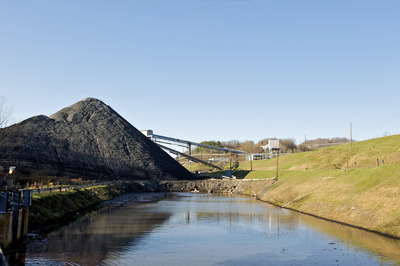Water modelling for the mining industry
CSIRO has developed a new model for coalminers, intended to forecast future mine water needs. The model was unveiled at the 20th International Congress on Modelling and Simulation (MODSIM2013), held in Adelaide from 1 to 6 December, the theme of which was ‘Adapting to change: the multiple roles of modelling’.
Professor Damian Barrett, head of CSIRO’s Water in the Resources Sector research, said a key challenge for the industry is to maintain mine water storage at an optimal level, not only ensuring water security for mine operations during drought but also eliminating unregulated discharges during flood periods. He describes this as “the ‘Goldilocks’ state in water management - that is, not having too much or too little water but having just the right amount of water on mine sites for when it is needed”.

The model is depicted through three perspectives: the business perspective capturing the mine operation practices within a mine or across several mines or companies; the environmental perspective representing all the climate change patterns such as rainfall and catchment histories and weather forecast data; and the decision perspective which considers trade-offs by demonstrating how to develop strategies to best meet business needs while considering environmental constraints and opportunities.
“We applied the scenario model to a number of constructed case studies including single mine sites and multiple mines sites, with the multiple mine site case studies exploring water sharing and trading opportunities among mine sites,” said Professor Barrett. “This methodology provides a rigorous and objective technique for developing management strategies and assessing risk.”
CSIRO conducted its research in Queensland’s Bowen Basin, home to Australia’s largest coal reserves, as part of a suite of broader CSIRO research. Research in the region is providing strategies to help the industry forecast mine water quantity and quality, improve water use efficiency on-site and improve understanding of the impacts of mine water use on regional water.
“Through improved seasonal climate forecasts, the assessment of the effectiveness of water sharing and trading among multiple sites and the cost-benefit analysis of establishing water management infrastructure, our research is helping to guide the coal industry towards better water management that balances the needs of business with the needs of the environment,” said Professor Barrett.
$14K community grant provides water savings for school
Lalor North Primary School has undergone a water-saving transformation thanks to a community...
Lagoon cover dewatering solution for Gippsland Water
Gippsland Water was experiencing issues with its cover dewatering pumps, which were solved...
The role of AI in smart water management
IoT sensors, AI and predictive analytics are emerging as key solutions to enhance water...










